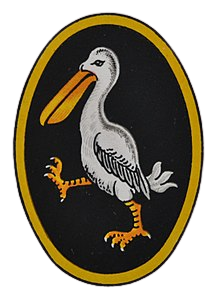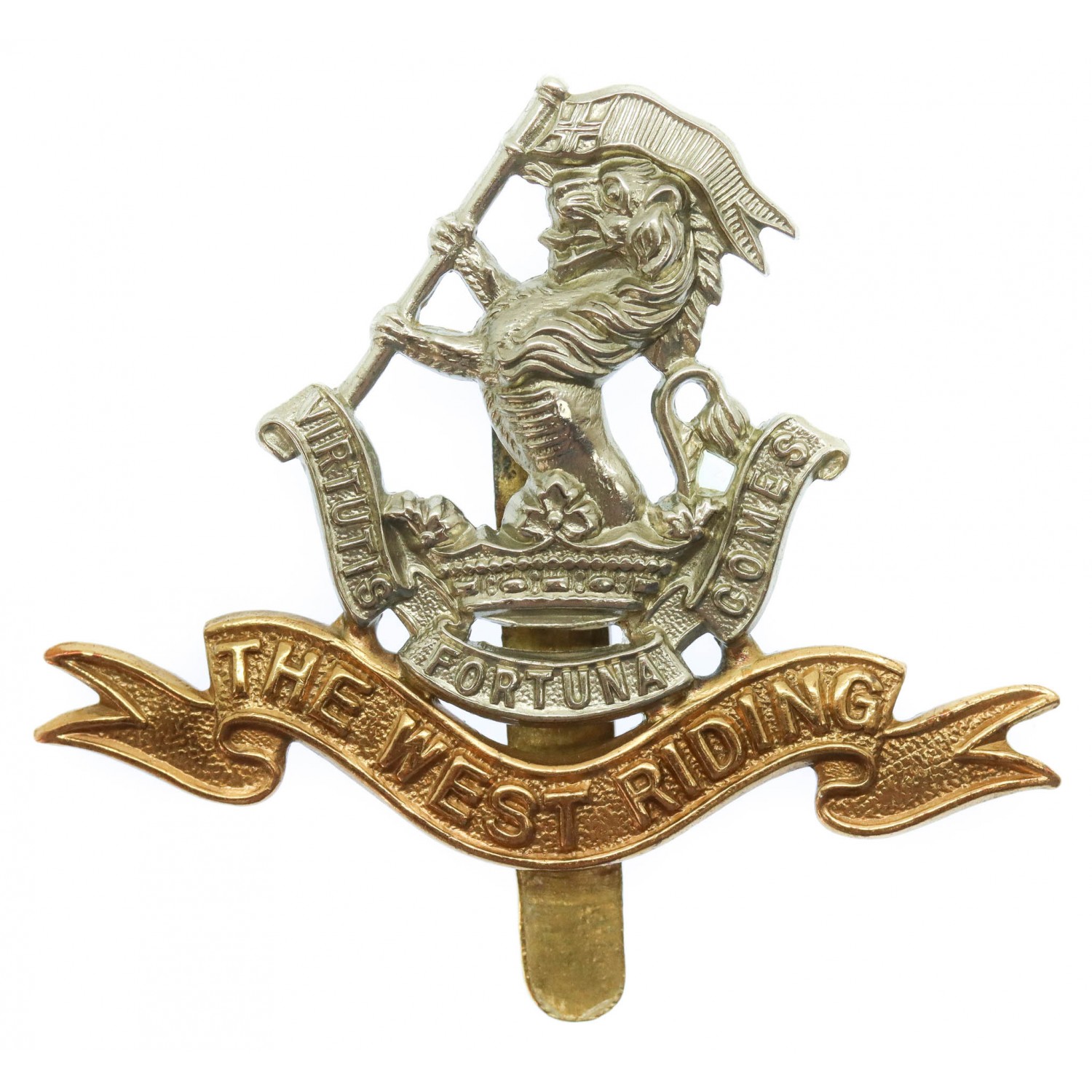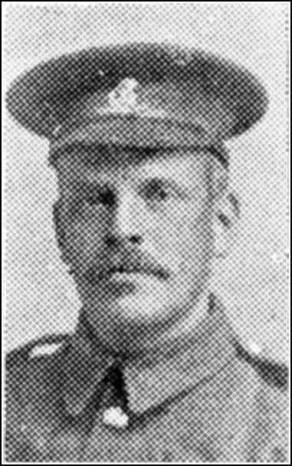
265765 Private Thomas Wilson Downes
[WIA, DOW]
A Company, 2nd/6th Battalion
Duke of Wellington's
(West Riding Regiment)
186th (2/2nd West Riding) Brigade
62nd (2nd West Riding) Division
1914-1918
This file last updated 5 August, 2021 17:42

Introduction

Thomas Downes
Tom Wilson Downs1 (3rd quarter of) 1882 - 28 Oct 1918, was born in BILTON, YORKSHIRE, the son of William Downs and Elizabeth, née Clarkson. William was born at HAMSTHWAITE and Elizabeth at CLINT.
From the information presently available, Tom is the eldest of their children and siblings are Joseph (born abt 1886) and Stephen (born 16 Mar 1892, with sisters Eva who remains unmarried and Edith who marries Thomas Edward Inman in 1915. There is another child, possibly Hannah, but as yet I have been unable to find any other detail.
Thomas reportedly serves in the Boer War. His date of birth makes it most likely that this would have been the second Boer war. The 2nd Battalion Duke of Wellington's Regiment arrived in SOUTH AFRICA in early 1900 and took part in the RELIEF OF KIMBERLEY in February 1900 after it had been under seige by the Boers since October 1899. The battalion also took part in the BATTLE OF PAARDEBERG.
I have been unable to identify specific evidence of his Boer War service. There are a number of T. Downes recorded as serving in the Boer War, and even a Tom Downes, but none that can be definitely identified.
Tom marries Clara Thornton in 1906 and she is living at 85 Newmarket Street, SKIPON when she provides the words to be inscribed on his tombstone "REST IN PEACE FROM HIS LOVING WIFE AND CHILDREN". They have six children. The 1911 Census shows that their children are George [Thornton?], Elsie Downes, William Downes and Stephen Downes.
Before the war he is employed by the SKIPTON URBAN COUNCIL and, enlisted, he serves with A Company of the 2nd/6th (Territorial) Battalion of the Duke of Wellington's West Riding Regiment with Service Number 265765 and on his death the CRAVEN HERALD and WENSLEYDALE STANDARD, and WEST YORKSHIRE PIONEER print the reports below.
The division's training was severely delayed by lack of equipment and the need to reinforce the 1st Line units serving overseas. The division finally landed in FRANCE in January 1917 and served on the WESTERN FRONT until the ARMISTICE. It fought at ARRAS, CAMBRAI, the SPRING OFFENSIVE and THE HUNDRED DAYS, and was the only Territorial Force Division selected to form part of the Allied occupation force in the RHINELAND after the war. THe 2nd/6th Battalion had 250 men killed in the short period that they were in action.
Tom Downs' death on 18 Oct 1918 coincides with the lead-up to the BATTLE OF THE SELLE, a push by the 4th Army commencing on 17 Oct on a 10 mile [16 Km] front, with fighting continuing on the next two days. The type of wound makes it most likely that it is the result of a shell-burst sustained in the period before the attack.
The British would be using artillery to keep the Germans occupied so that they could probe the (barbed) wire for weak spots and assess their position and defences prior to the attack, while the Germans retaliated in kind. Brother Stephen Downes' shrapnel wounds were acquired in similar circumstances, as was brother-in-law Thomas Edward Inman whose body was never found.
He is buried in the ABBEVILLE COMMUNAL CEMETERY EXTENSION IV K.1., see his:
There is no photograph of the headstone but the CWGC is in the process of making a photographic record of gravestones.
Tom Downes is also honoured on the impressive SKIPTON MEMORIAL which has some 371 names of WW1 war dead from SKIPTON. The Order of Oddfellows also has a memorial described below.
Relatives Who Served in WW1
Brother Joseph Downes served with the 2nd/5th Battalion, Prince of Wales' Own, West Yorkshire Regiment.
Brother Thomas Downes served with the 2nd/6th Duke of Wellington's West Riding Regiment and was WIA, DOW
Brother Stephen Downes served in the AIF Rosa Houseman in Stockton NSW in 1919. He was WIA in 1917 and repatriated to Australia.
Brother-in-law Walter Houseman served with the 1st/8th Battalion Durham Light Infantry and was KIA.
Brother-in-law George Houseman served with the 1st/5th Battalion Duke of Wales' Own, West Yorkshire Regiment and was WIA.
Brother-in-law Thomas Edward Inman, husband of his sister served with the 1st Battalion, Prince of Wales' Own, West Yorkshire Regiment and was KIA.
This record prepared by Clive Mitchell-Taylor grand-nephew of Tom Downs, based upon records obtained from Craven's Part In The Great War. together with family information from Tom's grandson Michael William Downs and Clive. The layout has been altered to accord with the records on this site.
1 Findmypast.com.au 3rd quarter 1882, Bolton
Newspaper Reports - Craven Herald and Wensleydale Standard
08 Nov 1918
DOWNES – Died October 28th, from wounds received in action, Private
Thomas Downes, West Riding Regiment, Skipton.
We little thought when we said good-bye
We had parted for ever and you were to die;
Oh, the grief that it gives us, words cannot tell,
For we could not be with you to bid you farewell.
08 Nov 1918,
MORE SKIPTON CASUALTIES - Private Thomas Downes, West Ridings
After four years service in the Army during the present war, including two and a half years’ service at the Front, Private Thomas Downes, West Riding Regiment, of 85 Newmarket Street, Skipton, has died in hospital at Abbeville, France, following amputation of his leg, rendered necessary by a serious wound received in the fighting near Cambrai. Deceased, who served in the Boer War, leaves a widow and six children, for whom much sympathy is felt.
Letters from the hospital show that the operation on the leg was performed on October 26th, and that Private Downes became worse during the night, and despite everything that could be done for him he died on the morning of October 28th. The assistant matron says:– “It is so terrible for you and I feel very sorry for you indeed, yet no one can die a more noble death, and it must comfort you a little and almost make you proud to know that he has given his life for others.”
Private Downes was 36 years of age and worked for the Skipton Urban Council. His brother, Private Joe Downes, of Embsay, is also serving in France, and another brother, Stephen Downes, has gone back to Australia after serving with an Australian contingent in France.
31 Oct 1919
DOWNS [sic] - In loving memory of my dear husband, Private T. Downs, 2nd West Riding Regiment, dies of wounds received in action October 28th, 1918.
I heard the church bells ringing,
The day that the war was o’er;
Ringing out the message
That peace did reign one more.
And oh, how I thought with a heart that ached,
Of the one that I loved so well.
For what that message meant to me,
Only those who have lost can tell.
From his loving Wife and Children, 85 Newmarket Street, Skipton.
DOWNS – In loving memory of our dear brother, Private Tom Downs, who died of wounds October 28th, 1918.
Sleep on, dear brother, in thy lonely grave,
Your life for your country you nobly gave;
No loved ones around you to bid you good-bye,
But in God’s keeping you safely lie.
With aching hearts we shook his hand,
Tears glistened in our eyes;
We wished him luck but little thought
It was his last good-bye.
From his sisters Eva and Edith.
29 Oct 1920
DOWNS – In loving memory of a dear husband and father, Pte. T. Downs, who died of wounds in France, October 28th, 1918.
“He was ours, and we remember though the world forgets.”
From his loving Wife and Children, 85 Newmarket Street, Skipton.
23 February 1923
ODDFELLOWS' WAR MEMORIAL
UNVEILING CEREMONY AT A SKIPTON LODGE
OVER 200 WHO SERVED
There was a large attendance of local members of the Independent Order of Oddfellows at the Friendly Societies’ Hall, Skipton, on Saturday afternoon, on the occasion of the unveiling of a war memorial to the members of the Loyal Traveller’s Friend Lodge, I.O.O.F, M.U., who fell in the war.
The Memorial takes the form of a beautifully designed scroll within an oak frame with a glass front, the work of Mr. H. Spencer, junr., and it bears the inscription:–
LOYAL TRAVELLER’S FRIEND LODGE,
SKIPTON DISTRICT.
I.O.O.F. ROLL OF HONOUR M.U. OF
THOSE MEMBERS OF THIS LODGE
WHO FOUGHT FOR THEIR KING AND COUNTRY
TO UPHOLD THE SACRED CAUSES OF BROTHERHOOD
AND HUMANITY IN THE GREAT WAR, 1914–1918.
Below the inscription are the names of 173 members who served in the war, and of the 40 members who were killed. The names of the fallen occupy a central position on the scroll, and above them are the following words:–
IN MEMORIAM OF THOSE WHO MADE THE SUPREME SACRIFICE.
THEIR HEARTS ARE LIFTED UP, THEIR HEARTS THAT HAVE FOREKNOWN THE UTTER PRICE,
THEIR HEARTS BURN UPWARD AS A FLAME OF SPLENDOUR AND OF SACRIFICE
The names of the fallen are as follows:–
H. Armstrong, J.J. Brown, J. Barrett, Robt. Brown, W.W. Bell, A. Clayton,
W.H. Coles, T.C. Chew, Tom Downes, T.M. Drummond, Jos Emmott, Thos. Edmondson,
J. Easterby, F. Gallagher, J.W. Garwood, G.E. Godwin, S.J. Hargreaves,
M. Hargreaves, A. Hebden, J. Hebden, A. Hawkswell, T.E. Inman, M. Lund,
R.C. [R.G.] Metcalfe, Hbt. Maudsley, Hy. Maudsley, A.J. Pimnock [Pinnock],
H.Y. [Harry] Riley, T.W. Storey, J.H. Stewart, R. Spencer, J.W. Shuttleworth,
Wm. Tempest, Hbt. Thompson, Fred Thornton, J.W. Varley, John Ward,
J.A. Whittaker, J.W. Whittaker, and R.D. Whittaker.
The Unveiling Ceremony
The unveiling ceremony was presided over by Bro. Thos. Bellamy, and was performed by Bro. Amos Culpan, Prov. C.S., and a simple service included the singing of the hymns, ‘O God our help’ and Kipling’s Recessional, ‘God of our fathers,’ and the reading of a portion of Scripture, and the offering of a prayer by Bro. James Greenwood, of Bradford, and formerly of Skipton.
Bro. Bellamy observed that those members of the Lodge whom they were met to honour went into battle, suffered untold privations, and, in many cases, made the supreme sacrifice. They gave their lives in defence of their homes and their country. Further than that, they gave their lives for justice and freedom, and in order that we might live. It was the duty of Oddfellows, equally as much as other sections of the community, to do everything within their power to make the country better for that sacrifice. “In the time of our prosperity,” concluded Bro. Bellamy, “never let us forget those who served us in the time of our adversity.”
A Lesson of the War
Prior to unveiling the memorial, Bro. Culpan described the ceremony he had been asked to perform as one not unattended by sorrow. It was an occasion upon which one felt a desire to make their Order better for the sacrifice of its members, and to extend the true spirit of brotherhood. In nearly 4,000 of their Lodges they would fund a roll of honour. Over 22,000 of their members made the supreme sacrifice, and thousands of others were ruined and shattered in health and without prospects for the future. Each and all of them ought to perform some daily service that would make the sacrifice of those men worth while. One result of the terrible ordeal of 1914 to 1918 was the creation of a better feeling between men, and a desire to break down the class barriers that formerly existed. That was one of the great lessons of the war.
Newspaper Reports - West Yorkshire Pioneer
8 November 1918
DOWNES - Died Oct. 28 from wounds received in action, Pte. Thomas Downes, West Riding Regiment, Skipton
We little thought when we said good-bye
We had parted for ever and you must die:
Oh, the grief that it gives us words cannot tell,
For we could not be with you to bid you farewell.
8 November 1918
Skipton Council Employee Dies of Wounds
Pte. Thos. Downs, West Riding Regiment, husband of Mrs. Downs, of 85, Newmarket Street, Skipton, has died in hospital at Abbeville, France, following an amputation of the leg caused by wounds. A letter dated Oct. 27th. from the assistant matron states that Pts. Downs was admitted to hospital with his leg in a dangerous condition, and it was necessary to amputate it on the 26th. During the night he got much worse, and despite everything that could be done for him he died peacefully at 7-30 on the 28th. The assistant matron adds:– “It is so terribly sad for you, and I feel for you very much indeed, yet no one could die a more noble death than he did, and it must comfort you a little and always make you proud to know that he had given his life for others.” Pte. Downs, who was 36 yeas of age, enlisted in October, 1914, and went out to France two years ago last February. He also served in the Boer War. He was formerly employed by the Urban District Council. He leaves a widow and six children. Another brother, Pte. Joe Downs, of Embsay, is serving in France, while another brother who served with the Australians has been discharged and returned to Australia.
Awards and Decorations
Private Tom Downes is entitled to wear the British War Medal and Victory Medal, but not the 1914-15 Star. See his Medal Roll entry which is at the top right of the 6-card document from British Archives.
1914-15 Star
[Extract from Ribbons and Medals: Naval, Military, Air Force and Civil, Captain H. Taprell Dorling, DSO RN,
George Philip & Son, 33 Fleet Street, London EC4, 1940]

The decoration consists of a four-pointed star in bright bronze as shown, with the date 1914-15 on the central scroll. The reverse is plain, and is stamped with the name and unit of the recipient. The ribbon is red, white and blue, shaded and watered, worn with the red nearest the centre of the breast. It is atached to the medal through a ring.
It is similar in shape and description to the 1914 Star, to which few, if any, Australians were entitled.
The decoration, sanctioned in 1918, was issued "to all officers, warrant officers, non-commissioned officers and men of the British, Dominion, Colonial and Indian Forces, including civilian medical practitioners, nursing sisters, nurses and others eployed with military hospitals, who actually served on the establishment of a unit in a theatre of war as defined in Appendix 'A'. Individuals in possession of the 1914 Star will not be eligible for the award of this decoration."
Appendix 'A' included the Western, Eastern, Egyptian, African, Asiatic and Australasian Theatres of war, with commencement dates individual to countries and campaigns.
British War Medal 1914-20
[Extract from Ribbons and Medals: Naval, Military, Air Force and Civil, Captain H. Taprell Dorling, DSO RN,
George Philip & Son, 33 Fleet Street, London EC4, 1940]

This medal was approved by King George V in 1919 to record the bringing of the war to a successful conclusion and the arduous services rendered by His Majesty's Forces.
The medal, which is supended from its ribbon by means of a straight clasp, without swivel, bears on the obverse the effigy of His Majesty - exactly similar to that on a half-crown - with the legend 'Georgivus V : Omn : Rex et Ind : Imp'.
The reverse bears a design which represents St George on horseback, trampling underfoot the eagle shield of the central powers and a skull and crossbones, the emblems of death. Overhead is the risen sun of victory. The male figure, rather than a symbolical female one, was chosen because man had borne the brunt of the fighting. The figure was mounted on horseback as symbolical of man's mind controlling force (represented by the horse) of far greater strength than his own. The design is thus also symbolical of the mechanical and scientific appliances which helped so largely to win the war.
The ribbon has a orange watered centre with stripes of white and black at each side and with borders of royal blue. It is stated that the colours have no particular signification.
Victory Medal
[Extract from Ribbons and Medals: Naval, Military, Air Force and Civil, Captain H. Taprell Dorling, DSO RN,
George Philip & Son, 33 Fleet Street, London EC4, 1940]

This medal, of bronze, bears on the obverse a winged figure of Victory, full length in the middle of the medal and full face; the borders and the backgound plain, without either incription or date. On the reverse is an inscription. "The Great War for Civilization." and either the names of the different Allied and Associated Powers, or their coats of arms.
The rim is plain, and the medal hangs from a ring. The ribbon is red in the centre, with green and violet on either side shaded to form the colours of two rainbows.
It has also been approved that any officer or man who has been "mentioned in despatches" shall wear a small bronze oak leaf on the ribbon of this medal. Only one oak leaf is so worn, no matter how many "mentions" the wearer may have received.
The medal is designed to obviate the exchange of Allied Commemorative war medals, and is issued only to those who actually served on the establishment of a unit or ship in a theatre of war. [This is an important distinction, as those Australians who served only in Australia, or only in Australia and England, were not entitled to the award.]